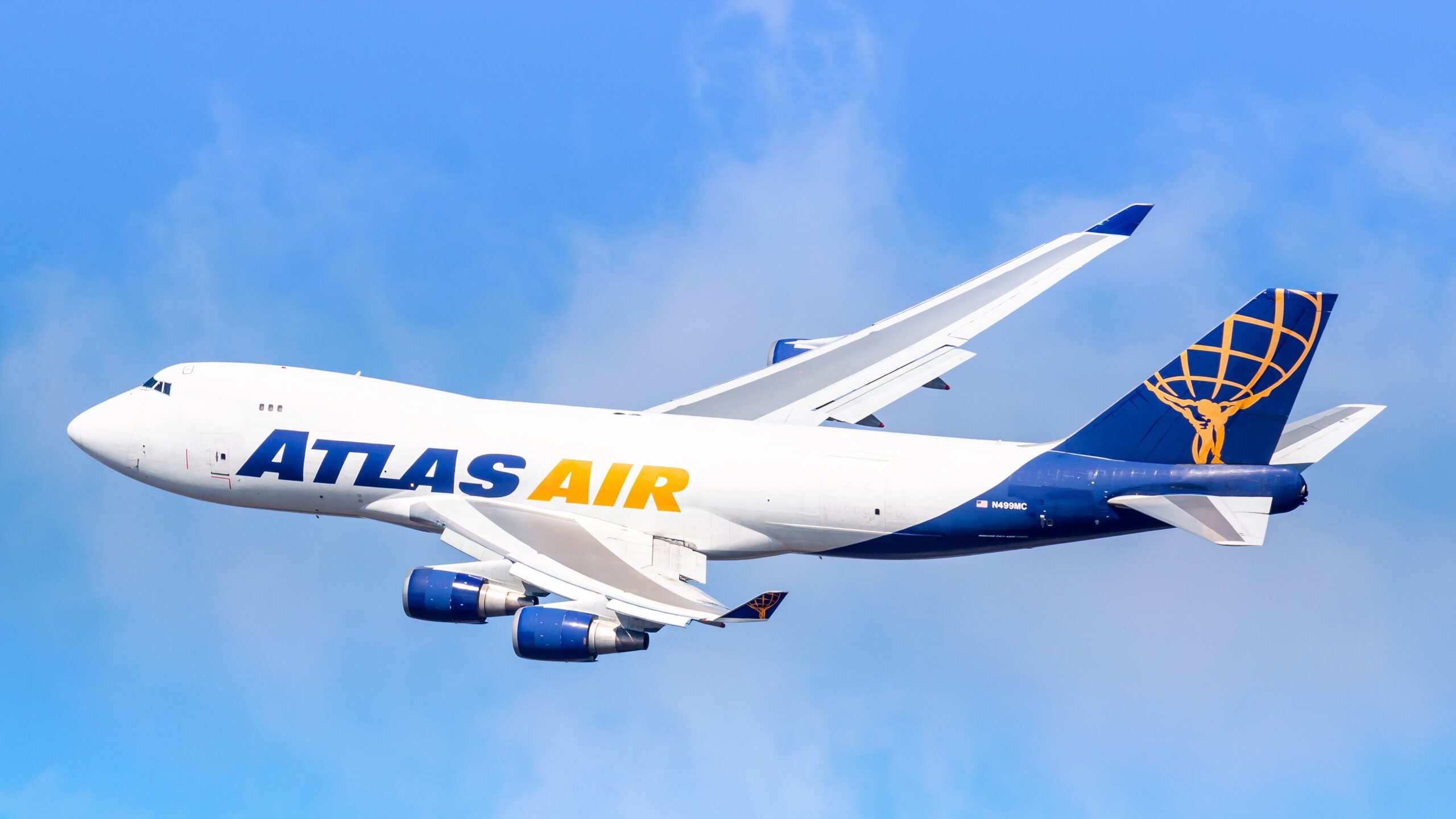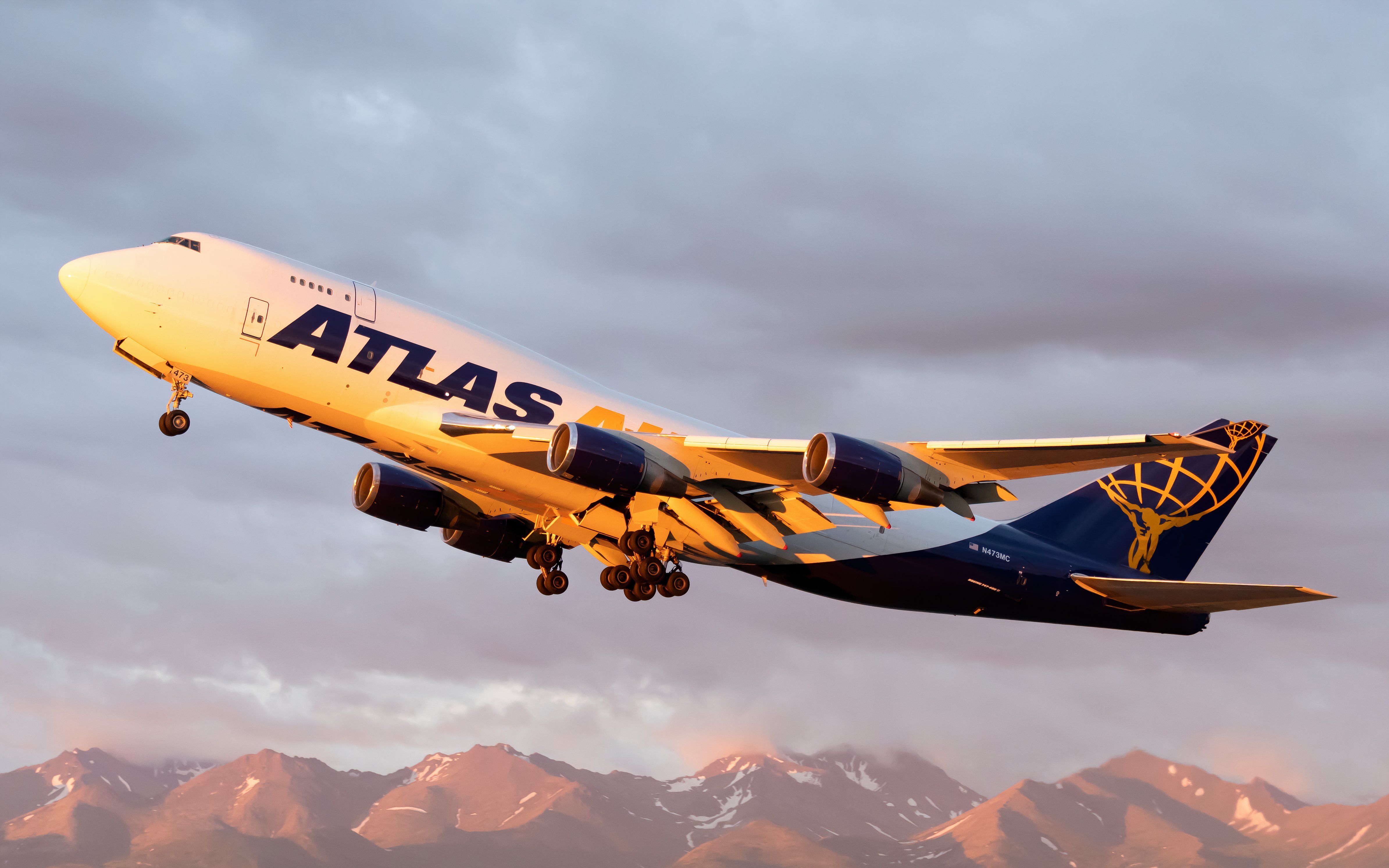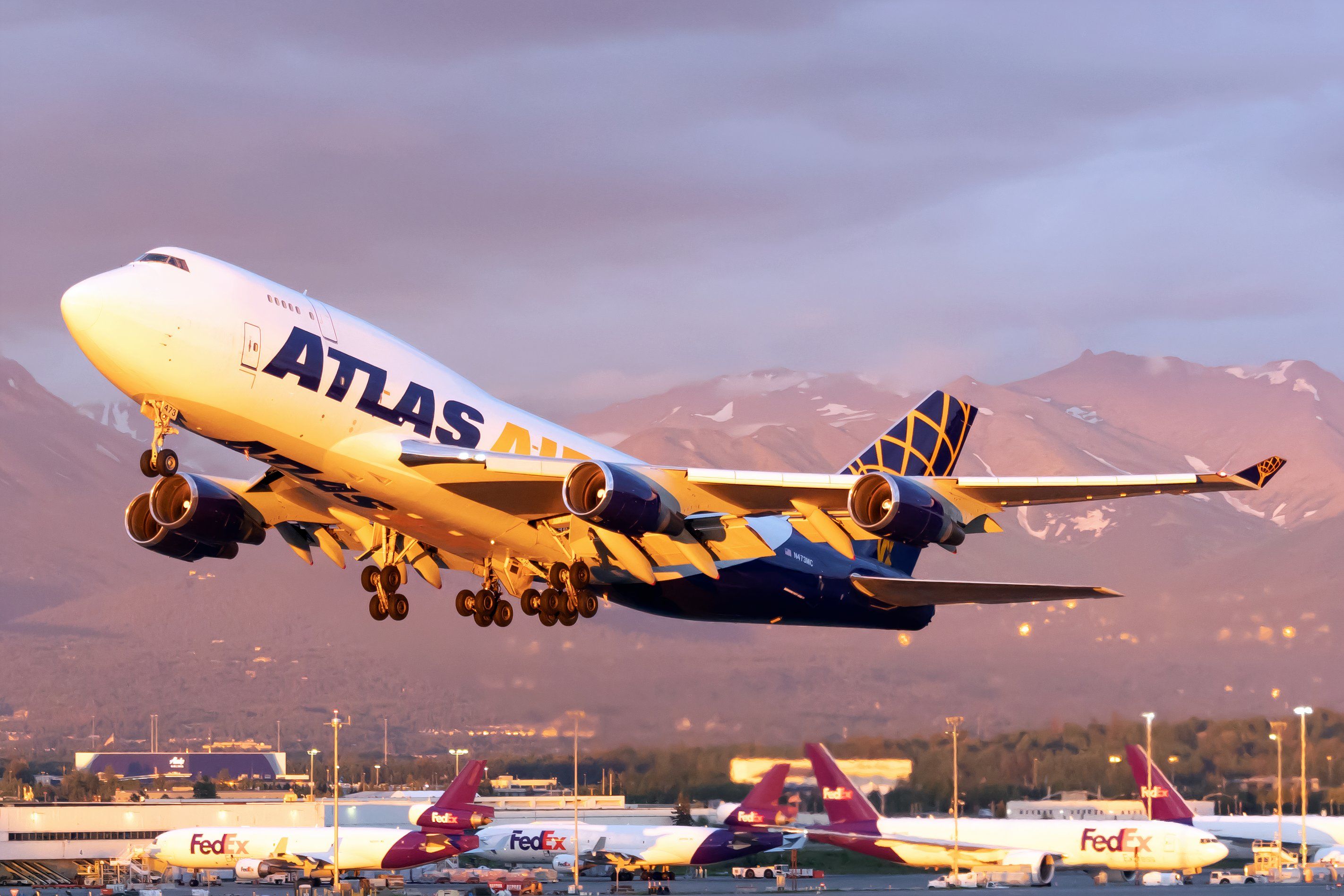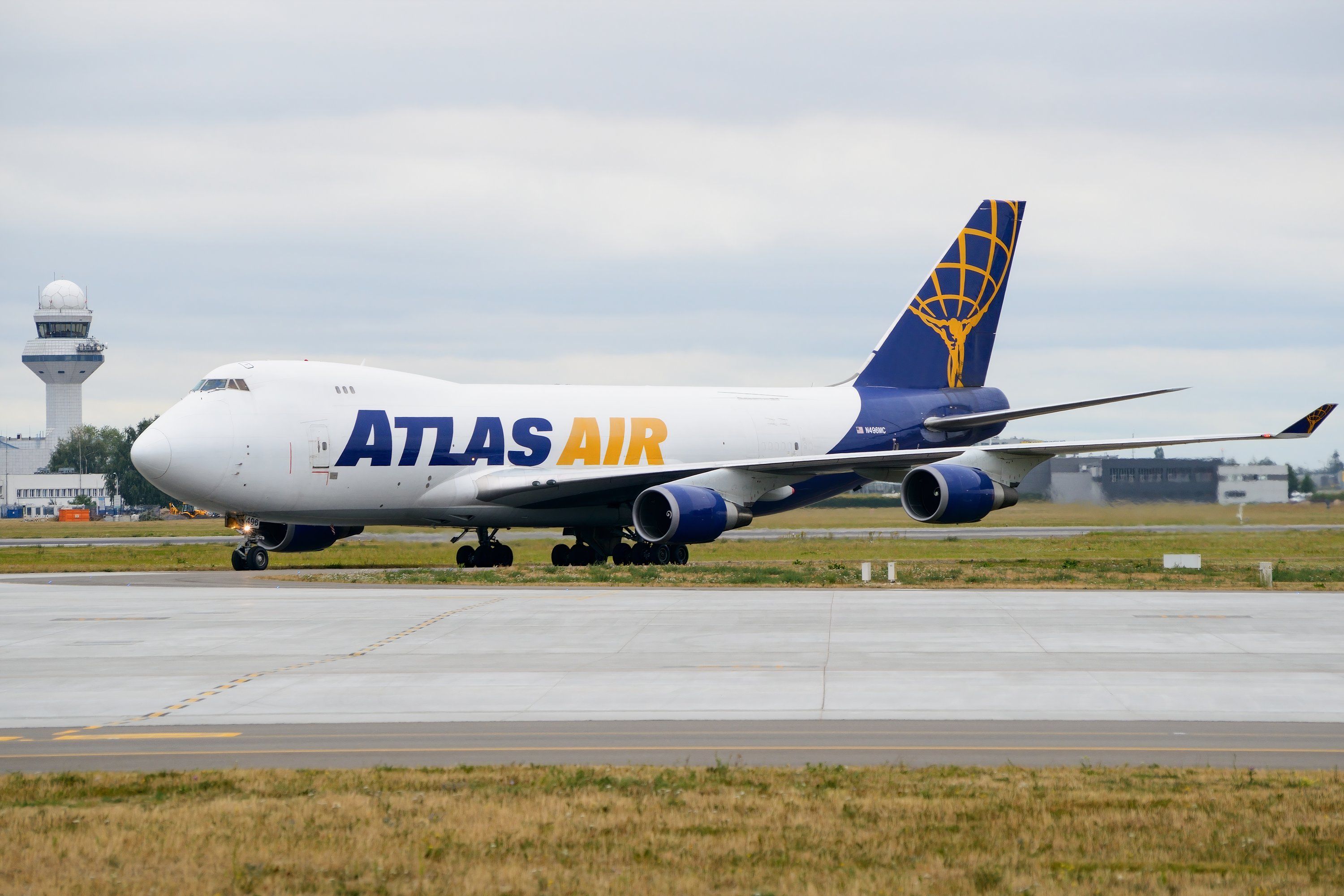Summary
- Atlas Air Boeing 747 had to return to Seoul due to hydraulic failure & landing gear damage.
- The same aircraft has been involved in three separate incidents this month.
- Despite recent incidents, it shows the level of safety considered in aircraft manufacturing and the extend to which pilots train.
An Atlas Air Boeing 747 freight aircraft had to return to Seoul earlier this week after suffering hydraulic failure during its climb out and damage to its landing gear upon returning to the airport. The aircraft involved has suffered from a series of operational disruptions in recent weeks.
Diverting back to Seoul
The aircraft involved is a 33-year-old Boeing 747-400F, operated by Atlas Air, which was scheduled to fly from Seoul Incheon International Airport (ICN) to Anchorage Ted Stevens International Airport (ANC) in Alaska on June 11th.
According to The Aviation Herald, the aircraft took off from ICN but stopped its climb at 10,000 feet altitude due to a hydraulic failure detected. The pilot had to descend to 7,000 feet to dump fuel to bring the aircraft within the safety of its range of landing weight.
It was reported that the aircraft returned around 90 minutes after departing, and after landing, it was discovered that the aircraft had three burst tires on its left landing gear, leaving the aircraft stuck on the runway.
Photo: Vincenzo Pace | Simple Flying
Reports state that the aircraft, during departure, suffered a separation of treads on two of its tires which caused a cut on the aircraft’s hydraulic system number 1, and the third tire got damaged upon landing.
At the time of writing, the aircraft is still on the ground at ICN. The interesting thing about this aircraft is that it was never supposed to be in Seoul in the first place.
The previous day
On June 10th, the day before the incident, the aircraft was scheduled to fly from Hong Kong International Airport (HKG) to ANC. While the departure from HKG was delayed by over two hours, the flight did eventually take off.
However, three hours into the flight, the aircraft diverted and landed at Seoul Incheon, where it remained on the ground for a day before it set off to Alaska, only to return once more.
Photo: Vincenzo Pace | Simple Flying
Considering these two incidents took place within 24 hours, the aircraft will now be scrutinized to identify any potential issues as it is repaired, ensuring the aircraft returns to service with a clean bill of health.
Simple Flying has reached out to Atlas Air to understand more about these incidents. Any response received will be updated in this article.
A rough patch
A week prior to these two incidents, the aircraft in question was involved in another incident. On June 2nd, the aircraft, during its service from Anchorage to Mexico City, the pilots identified an issue with one of the aircraft’s tires during take-off, which resulted in the pilots performing an emergency landing at Los Angeles International Airport (LAX).
In that incident, the aircraft landed safely and had the capability to taxi to the stands under its own power. The aircraft was on the ground for around 11 hours before flying to its original destination, Mexico City.
Photo: Mariusz Klarowicz | Shutterstock
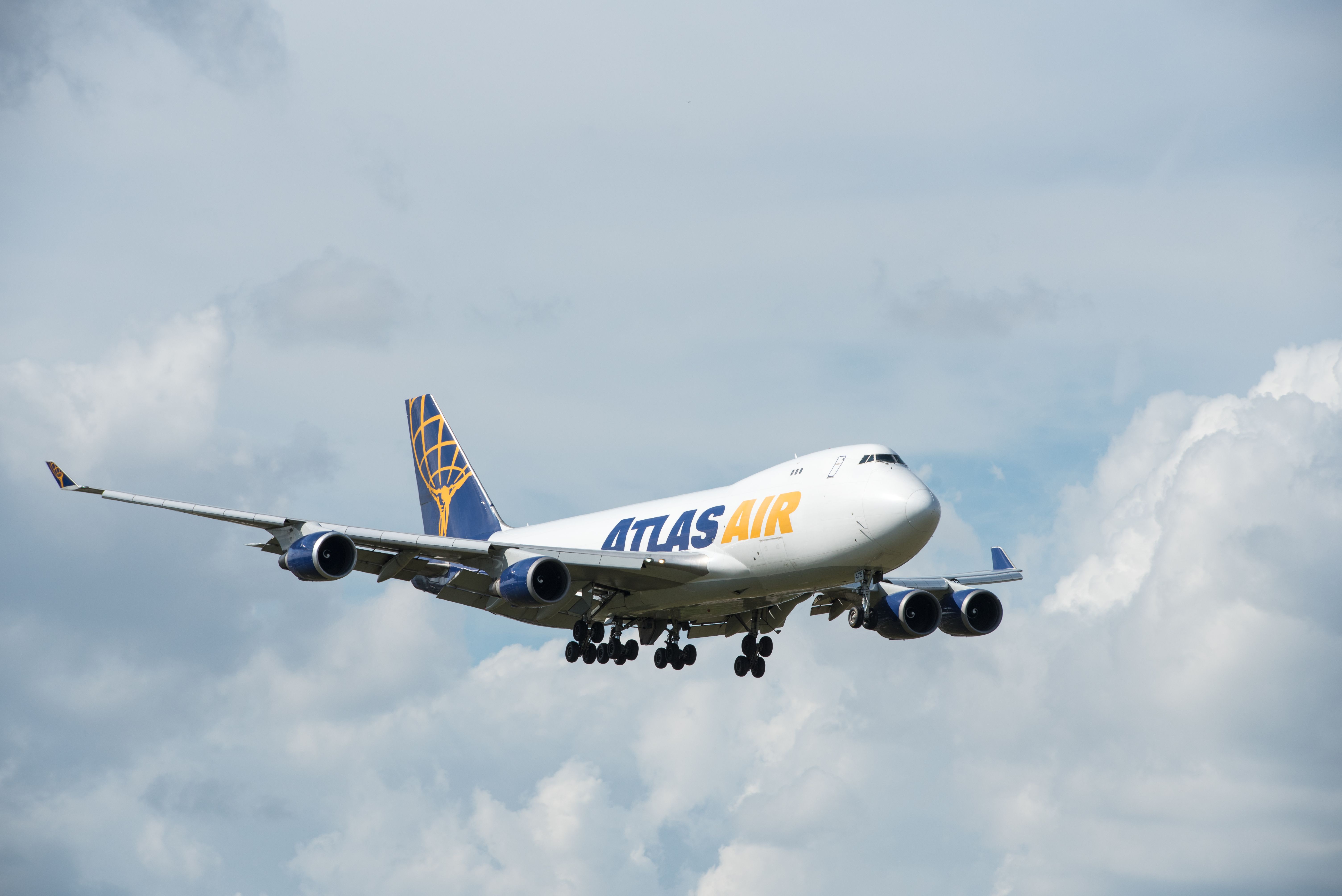
Related
Atlas Air Boeing 747-400F Makes Emergency Landing In Los Angeles After Blown Tire
The pilots noticed an issue with one of the aircraft’s 16 tires “upon taking off.”
While it is unusual to see a single aircraft experience a series of issues in a short period of time, it goes to show that airplanes nowadays are extremely safe and capable of operating safely despite suffering technical issues due to the system contingencies placed on aircraft during the manufacturing process.
Furthermore, it is a testimony to how well pilots are trained to handle unusual operational situations and their ability to make decisions and follow the checklists.

